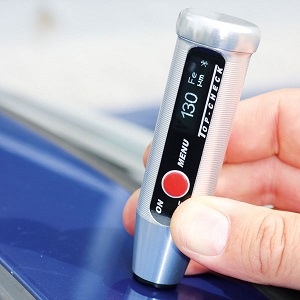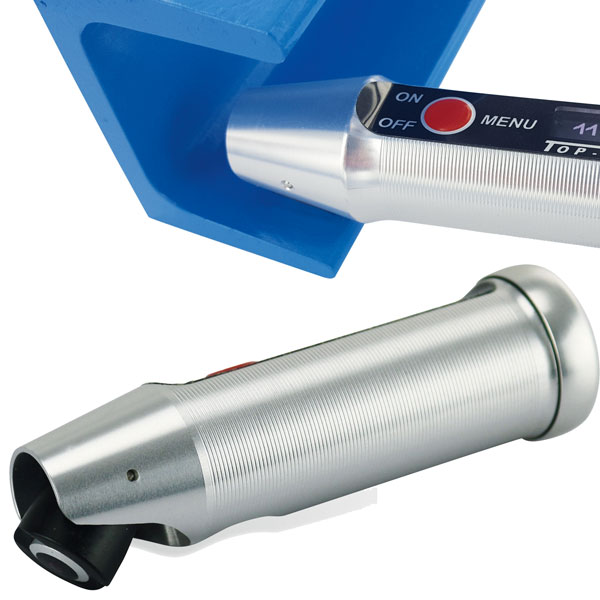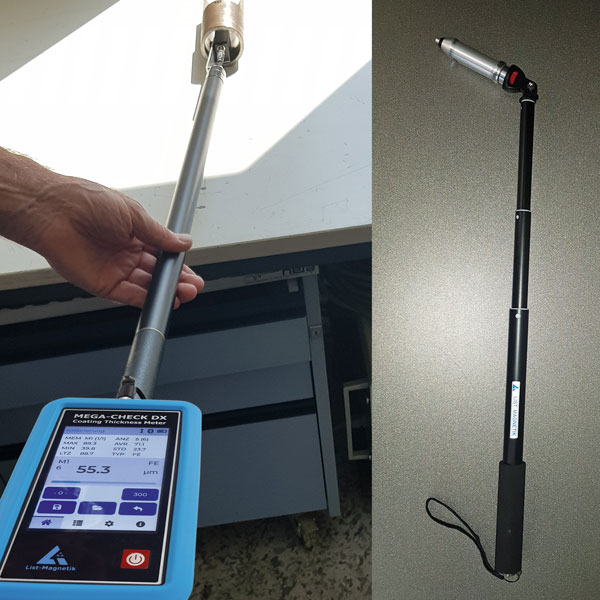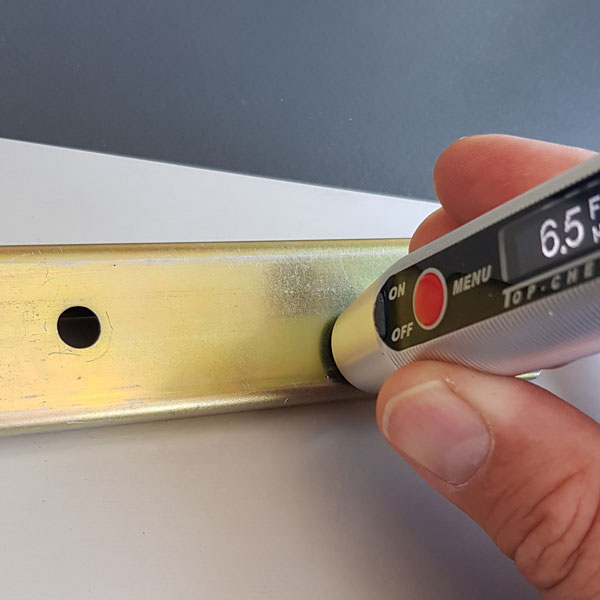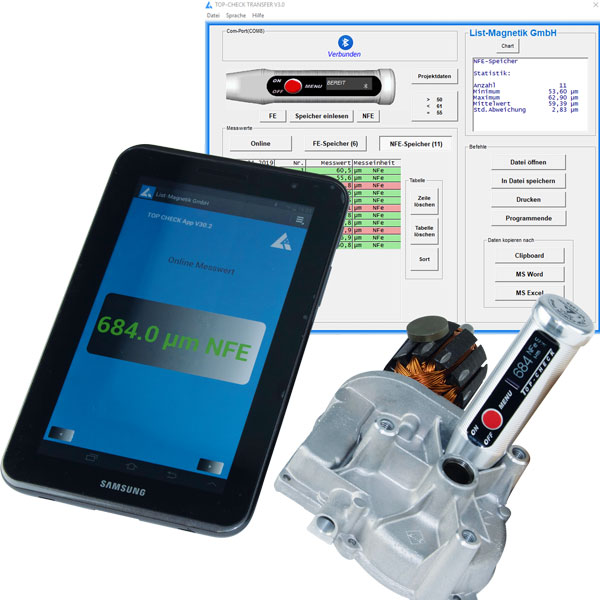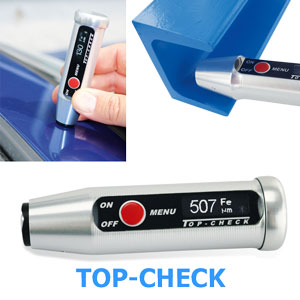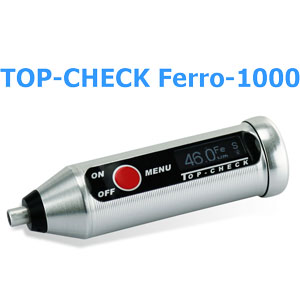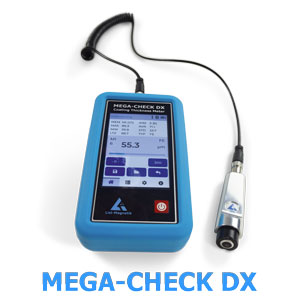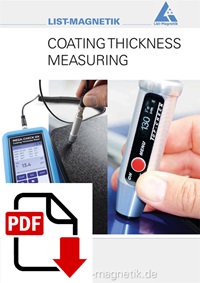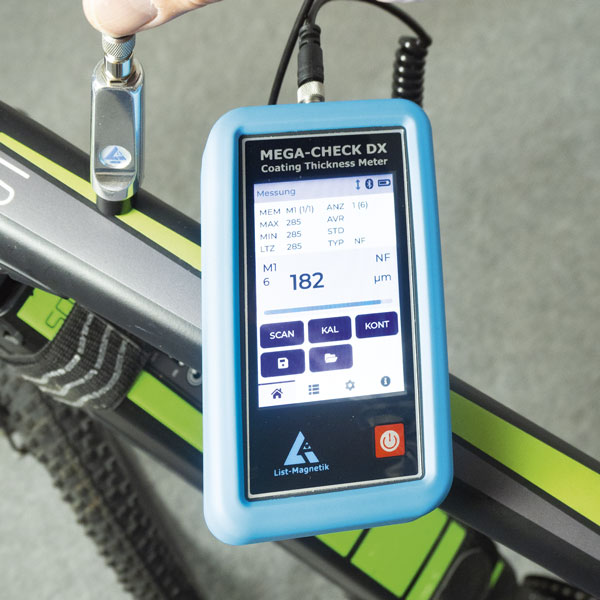Measurement of coating thicknesses with coating thickness gauges
What is coating thickness measurement?
Coating thickness measurement is concerned with determining the thickness of coatings and layers on surfaces. Coating thickness is generally defined as the thickness of a coating, such as paint or varnish, that is firmly applied to a base material. This coating can be a single layer or multiple layers (paint on zinc on steel).
You can use a coating thickness gauge to measure the thickness of coatings and finishes on surfaces. Whether it is paint or varnish, plastic, anodized coating or galvanized coating, the important thing is that the coating is firmly and dryly applied to the base material.
Applications for coating thickness gauges
As part of the quality assurance of the painting process, the coating thickness is measured to monitor the optimal use of materials. Experts check whether metal parts are sufficiently protected against corrosion by the paint: vehicles, steel beams, railings. Coating thickness gauges are also used for galvanizing or chrome plating.

Quality assurance in the painting process
- Compliance with minimum paint thickness
- Optimization of material usage
Quality assurance for galvanic coating
- Galvanizing, chrome plating on steel
- Painted galvanizing, determination of both coating thicknesses (zinc and paint)
- Copper-coated steel gravure rollers
Quality assurance for anodized aluminum coatings
- Fulfillment of high environmental requirements through minimum thickness
Quality assurance for rubber coatings on metal
- Particularly thick layers
- Consideration for soft, yielding upper material
Car expert
- Is the paint original or repainted after an accident?
Corrosion protection on structures
- e.g. bridge railings, sluice gates, boilers
Fire protection coating
- Is the requirement for a coating of 6.5 mm met?

Non-destructive coating thickness measurement
Coating thickness measurement with a digital coating thickness gauge from List-Magnetik is non-destructive. The coating thickness gauge is applied gently and will not damage a thoroughly dried coating.
The unit used in coating thickness measurement is “micron“, abbreviated also µm (with a Greek „mi“). One micron is one thousandth of a millimeter. In the range below 100 µm, a measuring accuracy of 1 µm can be achieved with a List-Magnetik coating thickness gauge.
List-Magnetik coating thickness gauges only measure on metal
Substrate required for coating thickness measurements: Metal - “FE” metals and “NF” metals
The most important requirement for coating thickness measurement with List-Magnetik instruments is the presence of a metallic substrate. Coating thickness measurements over ceramics, glass or plastics are not possible with our coating thickness gauges.
Coating thickness measurement for magnetizable metals
Ferromagnetic metals (FE metals for short) such as steel, iron and cobalt can be magnetized. They can be measured magneto-inductively. Nickel is also normally ferromagnetic, but not if the phosphorus content is 11% or more.
Coating thickness measurement for non-magnetizable metals
"Non-ferromagnetic" NF (or NFE) metals are all other metals that are electrically conductive. The eddy current method is used here. For example, aluminum, copper, or zinc. Stainless steel can be slightly ferromagnetic, but should be measured as an NF metal using the eddy current method.

Magnetic induction method for coating thickness measurement, or eddy current
List-Magnetik instruments use two of the most common non-destructive testing (NDT) techniques, the magnetic induction method according to ISO 2178 and the eddy current method according to ISO 2360. The magnetic induction method is used when the substrate itself is magnetizable (steel or iron). The eddy current method is used when the substrate is at least electrically conductive (other metals such as aluminum).
The magnetic-inductive method uses a tiny permanent magnet to generate a magnetic field, the strength of which is then measured using a Hall sensor. The thicker the layer, the lower the attenuation of the measurement signal. The thickness can be derived from this.
In the eddy current process, an alternating magnetic field generates eddy currents in the base material, the resonance of which can be converted into coating thickness.
List-Magnetik coating thickness probes automatically detect which method to use. In the case of stainless steel, the detection is ambiguous and must be switched to the eddy current method.
Requirements for measuring coating thickness
- The coating must be dry and cured
- The coating must not fall into the same group (FE, NF) as the substrate
- Strongly magnetic base material can interfere with the probe to such an extent that it is damaged internally
- Thin layers of less than 3 µm cannot be measured stably
- The base material must not be thinner than 0.5 mm
- The probe cannot be placed on small contact surfaces with a radius of less than 1 mm (FE) or 6 mm (NF)
- If the curved base has an outer radius/convex of less than 2 mm (FE) or 6 mm (NF) or an inner radius/concave of less than 8 mm (FE) or 38 mm (NF), it cannot be fitted either
Various methods of coating thickness measurement
- List-Magnetik offers highly accurate and reliable coating thickness gauges designed for demanding applications. Our solutions provide non-destructive coating thickness measurement on complex surfaces and hard-to-reach areas with proven, field-tested measurement methods that ensure high accuracy and ease of use
- Infrared measurement methods are highly material dependent and offer limited accuracy, especially for multi-layer systems or varying surface textures. Non-contact ultrasonic measurement, on the other hand, is often limited to certain materials and requires complex calibration and coupling fluid, making it difficult to use in practice.
- List-Magnetik focuses on proven electromagnetic and eddy current measurement techniques that provide reliable, easy-to-use, and accurate coating thickness measurement for a wide variety of materials and surfaces.







